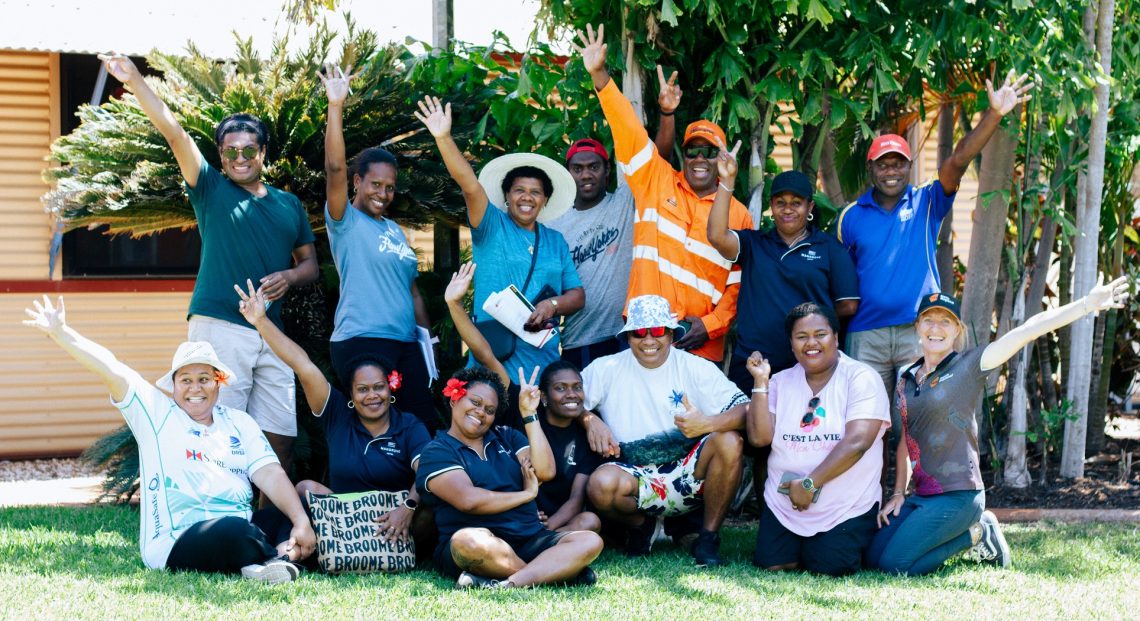
By Richard Curtain and Stephen Howes
The Pacific Australia Labour Mobility (PALM) scheme has been transformed over the last five years.
In June 2019, there were 5,886 PALM visa holders in Australia. Five years later, in May 2024, there were 32,513, an increase of 450%.
There are several factors behind this rapid growth, perhaps most importantly the preference given to PALM workers during COVID and the expansion of PALM from only seasonal to multi-year work.
But what has this incredibly rapid aggregate growth meant for the ten countries that supply workers to the PALM scheme?
This article uses visa data from the Department of Home Affairs to answer this question.
The first answer is that every country has been a winner, as the next graph shows. It plots the numbers and rankings for each of the ten countries at the start and the end of the period as well as the growth over that period.
The minimum growth rate is 181% for Vanuatu, which corresponds to almost a tripling of worker numbers.
Vanuatu has been the biggest PALM sending country since 2017 when it overtook Tonga. But just in May of this year, Fiji displaced Vanuatu.
As the next graph shows, Vanuatu has experienced spurts of rapid growth, but also periods of decline, especially since March 2023. Fiji’s growth, while not monotonic, has been more consistent (Figure 2).
Solomon Islands vs PNG is another interesting comparison (Figure 3).
They both started with less than 200 workers in 2019.
Both have grown their numbers rapidly, but Solomon Islands has been much more successful and now sends 3,000 more workers than PNG.
PNG has based its recruitment on the efforts of its Members of Parliament. Solomon Islands has taken a more orthodox approach, including the use of an Australian-based liaison officer to identify and support new employers.
PNG, despite its efforts and the assistance it is receiving from the World Bank, is still only sending a few hundred more workers than Kiribati, a country that has a fraction of its population and is a lot further away from Australia.
More generally, the fastest-growing source countries have mainly been those with the lowest share to start with.
The two biggest source countries in June 2019 (Tonga and Vanuatu) have had the slowest growth rate over the period. The next three have had middling growth rates (Samoa, Timor-Leste and Kiribati).
Four of the five smallest have had the highest growth rates (PNG, Solomon Islands, Fiji, and Tuvalu). (Nauru is only sending a handful of workers. Its growth rate is undefined since it was sending no workers at the start of the period.)
Because growth has been more rapid among the smaller senders, there has been strong convergence in market share or, put differently, a big reduction in market concentration.
The next and final graph shows the market share of the three biggest source countries, whoever they are.
In June 2019, the big three then (Vanuatu, Tonga and Timor-Leste) had a market share of 78%. The big three now (Fiji, Vanuatu, and Solomon Islands) have a share of only 54%.
Less concentration is a good thing. More countries get to participate more meaningfully, and employers have more choice.
If numbers from some countries start to decline (Vanuatu and Samoa have shed some 3,000 workers between them since the start of 2023), then other countries stand ready to fill the gap.
A lot more analysis is needed.
Unfortunately, we are unable to break the data down into the two streams corresponding to seasonal visas (mainly horticultural work) and four-year visas (mainly abattoirs).
We also need, from a Pacific perspective, to look at workers going to New Zealand as well as Australia.
However, the basic story for Australia’s PALM scheme is clear. We have talked a lot in our past writing about the importance of a first-mover advantage.
But rapid growth has meant a big shake-up. The massive growth over the last five years has undermined the benefit gained from being a first-mover, and given other countries a second chance. Negative publicity around PALM in some of the early big senders, especially Samoa and Vanuatu, has encouraged employers to look elsewhere.
And the introduction of entirely new industries into PALM has reduced the advantage that early movers had in horticulture via their experienced return workers.
Perhaps the best news for employers is that the two sending countries with the biggest populations – Timor-Leste and PNG – still send less than 20% of the PALM workforce.
That means that, for all the rapid growth to date, there is still plenty of room for more expansion. Unfortunately, the visa numbers suggest an end to aggregate PALM growth at least for the time being. If so, then the shake-up has come to an and, and it will be difficult for these two larger countries to expand their numbers.
PNG may have to wait for the next big expansion in aggregate PALM worker numbers to meet its target of 8,000 workers.
* This article appeared first on Devpolicy Blog (devpolicy.org), from the Development Policy
Centre at The Australian National University. Richard Curtain is a research associate, and recent former research fellow, with the Development Policy Centre. He is an expert on Pacific labour markets and migration. Stephen Howes is Director of the Development Policy Centre and Professor of Economics at the Crawford School of Public Policy at The Australian National University.

